I would like estimate the parameters of the Gompert-Makeham distribution, but I haven't got a result. I would like a method in R, like this Weibull parameter estimation code:
weibull_loglik <- function(parm){
gamma <- parm[1]
lambda <- parm[2]
loglik <- sum(dweibull(vec, shape=gamma, scale=lambda, log=TRUE))
return(-loglik)
}
weibull <- nlm(weibull_loglik,parm<-c(1,1), hessian = TRUE, iterlim=100)
weibull$estimate
c=weibull$estimate[1];b=weibull$estimate[2]
My data:
[1] 872 52 31 26 22 17 11 17 17 8 20 12 25 14 17
[16] 20 17 23 32 37 28 24 43 40 34 29 26 32 34 51
[31] 50 67 84 70 71 137 123 137 172 189 212 251 248 272 314
[46] 374 345 411 494 461 505 506 565 590 535 639 710 733 795 786
[61] 894 963 1019 1149 1185 1356 1354 1460 1622 1783 1843 2049 2262 2316 2591
[76] 2730 2972 3187 3432 3438 3959 3140 3612 3820 3478 4054 3587 3433 3150 2881
[91] 2639 2250 1850 1546 1236 966 729 532 375 256 168 107 65 39 22
[106] 12 6 3 2 1 1
summary(vec)
Min. 1st Qu. Median Mean 3rd Qu. Max.
1.0 32.0 314.0 900.9 1355.0 4054.0
